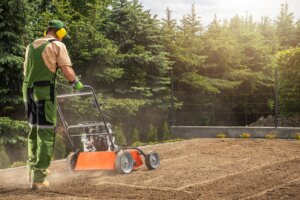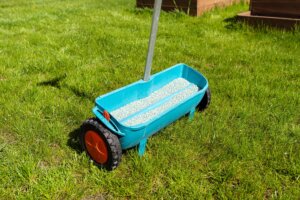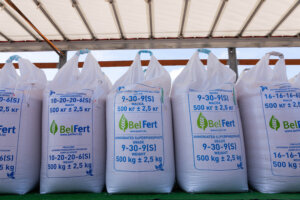The right fertilizer makes a huge difference in lawn, garden, and plant growth. One common, all-purpose option is 10-10-10 fertilizer, a balanced mix designed to support plants through various stages.
Let’s break down what it is, when to use it, and how to apply it effectively.
What Is 10-10-10 Fertilizer?
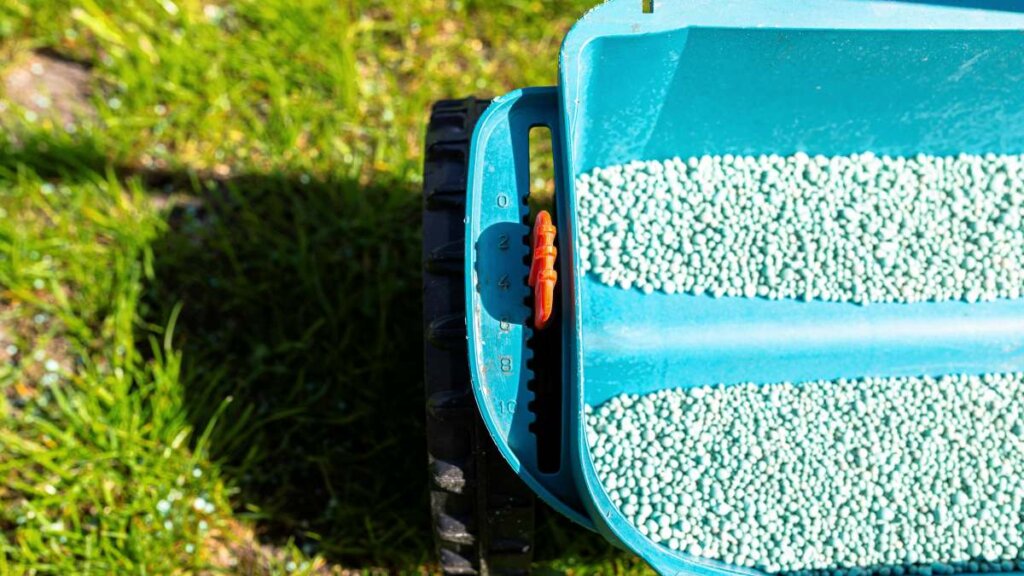
10-10-10 fertilizer is a balanced NPK fertilizer containing:
- 10% nitrogen (N) – for leafy growth.
- 10% phosphorus (P) – for strong roots and blooms.
- 10% potassium (K) – for disease resistance and overall vigor.
Plants need 17 nutrients; the primary ones are nitrogen, phosphorus, and potassium. This equal NPK ratio makes it ideal for deficient soil and general use on lawns, vegetables, and flowers.
The NPK Ratio Explained: Why Balance Matters
A 10 fertilizer with a 10-10-10 NPK ratio provides broad coverage for:
- Early plant growth.
- Reviving poor soil.
- Supporting mixed plantings.
However, it may be excessive for mature lawns or crops needing specific nutrients. In some cases, too much P and K can be harmful or unnecessary.
When to Use 10-10-10 NPK Fertilizer in Lawns and Gardens
Apply 10-10-10 in spring or early summer when plants are growing.
- Avoid use in fall or winter (plants are dormant).
- Apply during mild temperature conditions, such as morning or evening.
- Prevent burns by skipping hot, sunny hours.
How to Apply 10-10-10 Fertilizer the Right Way
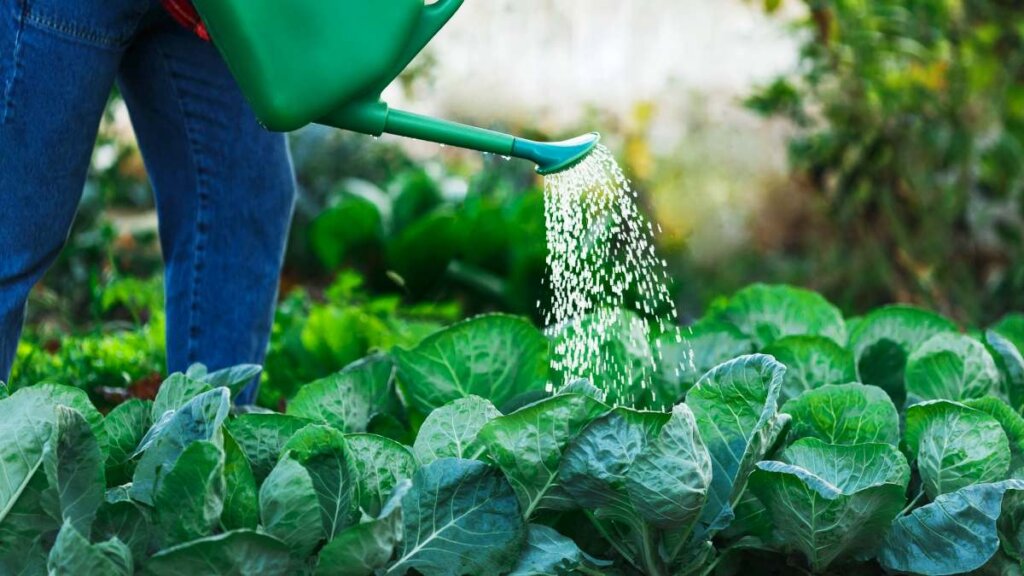
Granular vs. Liquid (and Organic)
- Granular 10-10-10 fertilizer: Comes in pellets. Use a spreader for even distribution and water afterward to activate absorption.
- Liquid 10-10-10 fertilizer: Dilutes easily and is ideal for quick absorption. Apply using a garden sprayer or watering can.
- Organic 10-10-10 fertilizer: Available in both granular and liquid forms. Slower to act, but ideal for long-term soil health and eco-conscious gardeners.
Tools Needed
- Spreader (granular)
- Sprayer (liquid)
- Gloves, water source, and eye protection
Watering Instructions
- Granular: Water thoroughly after applying
- Liquid: Follow package directions—extra watering may not be needed
Safety Tips
- Always read instructions carefully.
- Don’t exceed recommended amounts—excess can burn your plants.
- Keep pets and kids off treated areas until fully absorbed.
10-10-10 Fertilizer for Different Types of Plant Growth
Choosing the right fertilizer depends on your plant’s type, size, growth stage, season, and specific nutrient needs.
Lawns
Ideal for new lawns or those showing signs of nutrient deficiency. For established lawns, a nitrogen-rich blend might be more efficient.
Vegetables
Great for tomatoes, corn, and leafy greens during early growth stages, especially when soil nutrients are unbalanced.
Flowers
Supports blooming and healthy leaves, especially in early growing seasons.
Trees and Shrubs
Use sparingly for new transplants or young trees that need a boost in early growth.
House Plants
Less common, but can be diluted and used for container plants that show signs of poor growth—just be careful to avoid over-fertilizing in smaller spaces.
10-10-10 Fertilizer: Quick Reference for Plant Needs
| New Lawns | Yes | Provides balanced nutrients for initial establishment and growth. |
| Established Lawns | Sometimes | Good for nutrient-deficient lawns; otherwise, a nitrogen-rich blend may be better. |
| Vegetables (Early Growth) | Yes | Supports overall growth, especially for tomatoes, corn, and leafy greens in unbalanced soil. |
| Flowers (Early Season) | Yes | Encourages healthy leaves and blooming during the initial growth stages. |
| Trees & Shrubs (New Transplants) | Yes | Gives young plants a necessary nutrient boost for establishment. |
| Houseplants | Use with Caution | Can be diluted for struggling container plants, but easy to over-fertilize in small spaces. |
| Poor/Depleted Soil | Yes | Replenishes essential nutrients when specific deficiencies are unknown. |
| Mature Plants Needing Specific Nutrients | No | May provide unnecessary or harmful excesses of P and K if not needed. |
| Long-Term Soil Health (Organic Approach) | No | Organic alternatives like compost or manure are better for sustained soil improvement. |
Is 10-10-10 Fertilizer Always a Good Idea?
While it’s a versatile fertilizer, it’s not a universal fix. It’s most helpful for:
- New plantings.
- Poor or depleted soils.
- When you don’t know which specific nutrient is lacking.
But it can be a mistake in some scenarios:
- Mature lawns often need more nitrogen than phosphorus.
- Excess phosphate can damage waterways and the surrounding groundwater.
- Improper use may attract pests or result in leaf yellowing, browning, or curling.
Organic Alternatives
Organic fertilizers like manure or compost release nutrients slowly and improve soil with iron, zinc, and beneficial microbes—ideal for long-term results.
Risks, Precautions, and Common Mistakes
Using 10-10-10 fertilizer improperly can cause more harm than good. Here’s what to avoid:
- Overuse can lead to fertilizer burn.
- Runoff can harm local waterways and disrupt ecosystems.
- Ignoring soil tests may result in applying the wrong mix.
- Misjudging temperature and timing can waste nutrients or stress plants.
Always test your soil first and follow the product label. If unsure, consult with a local lawn care professional.
Key Takeaways: Should You Use 10-10-10 on Your Lawn or Garden?
- What it is: A balanced NPK fertilizer with equal parts N, P, and K.
- When to use it: During spring or early summer.
- Who it’s for: Anyone with deficient soil or new plants.
- When to avoid it: For mature lawns or nutrient-rich soil, where excess can be harmful.
10-10-10 fertilizer is a strong general-purpose tool, but it works best when matched to your plant’s needs and applied with care.
Not sure if your soil needs phosphorus or other elements?
Don’t guess—let Terra Lawn Care handle the rest. Visit our site and get expert help before things go bad.

